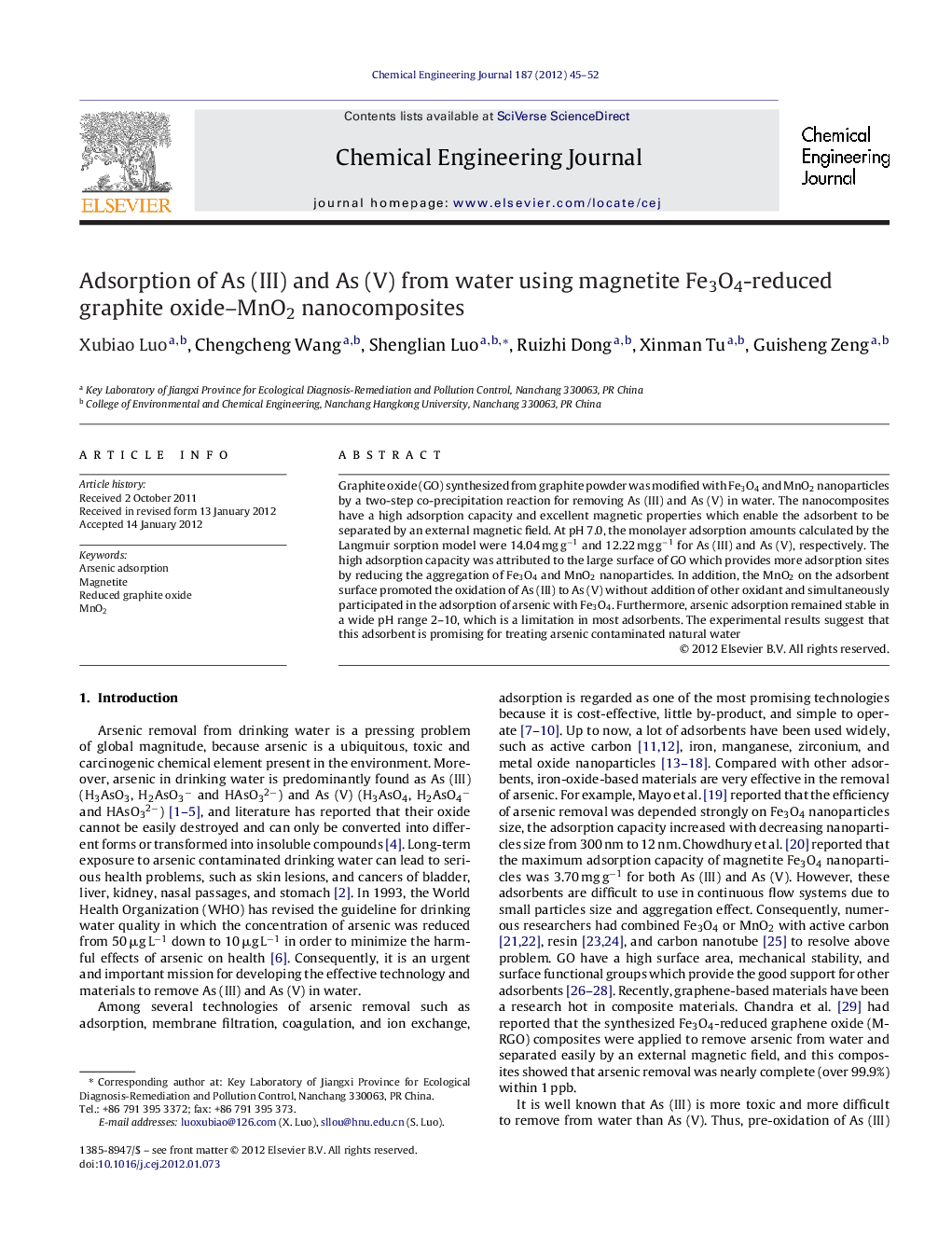| Article ID | Journal | Published Year | Pages | File Type |
|---|---|---|---|---|
| 150037 | Chemical Engineering Journal | 2012 | 8 Pages |
Graphite oxide (GO) synthesized from graphite powder was modified with Fe3O4 and MnO2 nanoparticles by a two-step co-precipitation reaction for removing As (III) and As (V) in water. The nanocomposites have a high adsorption capacity and excellent magnetic properties which enable the adsorbent to be separated by an external magnetic field. At pH 7.0, the monolayer adsorption amounts calculated by the Langmuir sorption model were 14.04 mg g−1 and 12.22 mg g−1 for As (III) and As (V), respectively. The high adsorption capacity was attributed to the large surface of GO which provides more adsorption sites by reducing the aggregation of Fe3O4 and MnO2 nanoparticles. In addition, the MnO2 on the adsorbent surface promoted the oxidation of As (III) to As (V) without addition of other oxidant and simultaneously participated in the adsorption of arsenic with Fe3O4. Furthermore, arsenic adsorption remained stable in a wide pH range 2–10, which is a limitation in most adsorbents. The experimental results suggest that this adsorbent is promising for treating arsenic contaminated natural water
Graphical abstractFigure optionsDownload full-size imageDownload as PowerPoint slideHighlights► A novel Fe3O4-RGO–MnO2 nanocomposite is prepared for arsenic removal. ► The nanocomposite has a As (V) capacity of 12.22 mg g−1 and As (III) of 14.04 mg g−1. ► The nanocomposite has oxidation, adsorption and magnetic separation properties. ► Kinetic data were well described by the pseudo-second order model.
